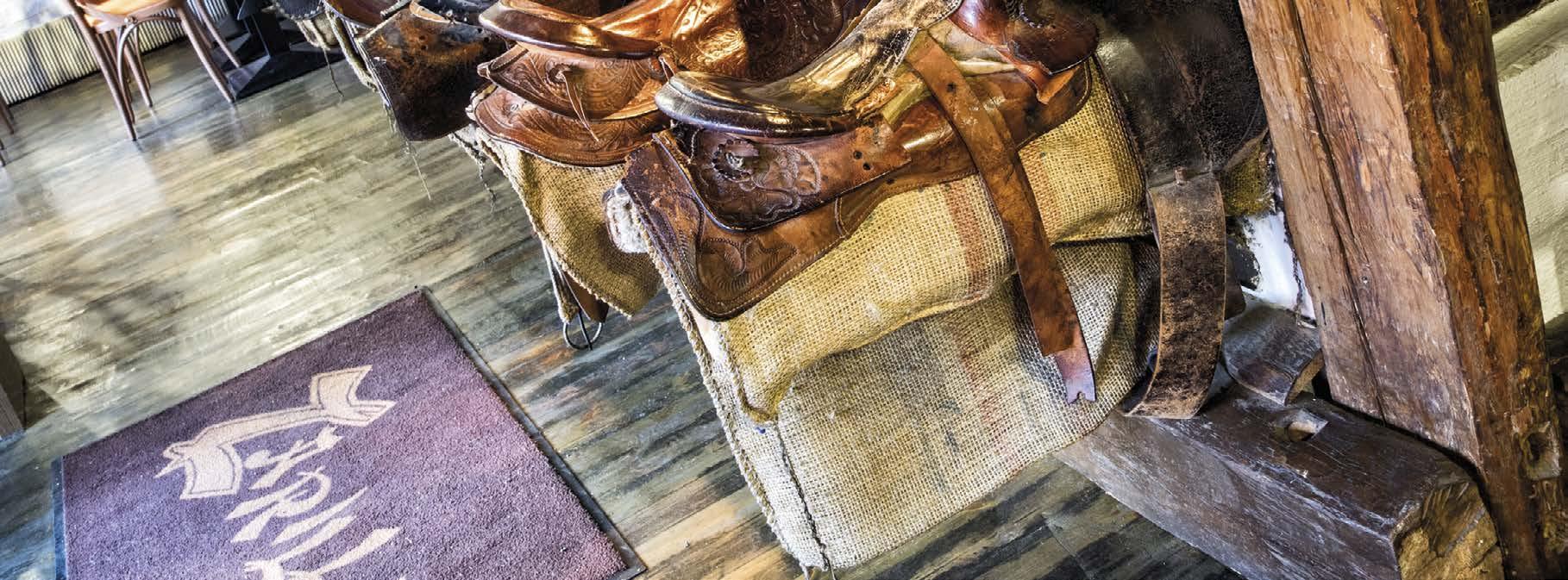












Tampere offers many great places to enjoy the stunning city views. Head out to Pyynikki ridge to climb up to the observation tower and marvel at the views opening to Lake Pyhäjärvi and Lake Näsijärvi. You can also admire Tampere panorama from
the roof of a historic building: Roof Walk Finlayson Area allows you to see the sights from a new perspective. Also, check out Näsinneula observation tower, Moro Sky Bar at Solo Sokos Torni Hotel and Laawu Rooftop Terrace & Sauna on top of Lapland Hotels Arena hotel.
In Tampere, the lakeside starts from the city centre, and so do the forests. Breathe some fresh forest air in Pyynikki nature reserve. While you’re there, don’t forget to try the world’s best doughnuts in the observation tower’s café! Some accessible nature reserves are located also in Kintulammi and Hervanta – you can even take the tram to Hervanta! All kinds of nature and lake activities like sup boarding, canoeing and biking are also provided, see visittampere.com for rental info.
Tampere is famous for its sauna culture and the city region has over 50 public saunas to choose from. Here are some of our favorites.
RAJAPORTTI
The oldest public sauna in Finland. Here you will experience the traditional sauna atmosphere. Let the locals show you how it’s done!
KUUMA SAUNA & RESTAURANT
Kuuma is one of the newest additions to Tampere sauna scene right in the city centre. Enjoy the heat, dip into the Ratina bay and have some food or drinks on the terrace.


Are you Hungry for Tampere? Savor the tastes and atmosphere of this unique city and find your favorite dishes from its vast range of restaurants. Local, organic, vegan, burgers, wings, oriental… Tampere has it all. Not to mention the breweries! Tampere is also known for the vivid market culture, where you’ll find all the local delicacies. See more from hungryfortampere.com!
Museum Centre Vapriikki has many ongoing exhibitions at the same time and the only Moomin Museum in the world invites you and your family for a magical journey into the fairytale world. The theme park Särkänniemi offers a great variety of amusement rides for both adrenaline seekers as well the ones enjoying more of a peaceful ride. Another great place for the whole family is Tallipiha Stable Yards. If you’re lucky, you might experience a horse carriage ride there!
Tampere is known for its vivid cultural life. All kinds of summer events awake the city centre during summer. The Summer Terrace in Central Square (11.5.–14.8.2022) is a must see with its 11 restaurants. Tampere also is quite possibly the most interesting city of diverse museums in Finland – themed museums from art to police and from spies to history of labor offer exploring for every taste. See what is happening in the city on visittampere.com
KAUPINOJA AND RAUHANIEMI
These lakeside saunas are loved by both locals and visitors. Swimming and sauna all year round!

















Tampere Times Magazine for Visitors
Issue 1/2022
Summer www.tamperetimes.fi
ISSN 2343-3817 (print)
ISSN 2669-8293 (online)
Published by Mobile-Kustannus Oy Brahenkatu 14 D 94 FI-20100 Turku, Finland
Tampere – A rugged beauty bursting with energy 8

Everything you ever wanted to know about Finnish baseball 10 Tampere in a nutshell 14

Test which museum is right for you 18
Map of Tampere 22
Hotels & hostels providing Tampere Times 24

The fascinating story of the realm of Serlachius 27 Moomins are for everybody 32 Finnish nature is ruthless 36
The most important hotel employee – Column by Minna Lindgren 40


Editor in chief Roope Lipasti
Publisher Teemu Jaakonkoski
Sales manager Raimo Kurki raimo.kurki@mobilekustannus.fi
Tel. +358 45 656 7216





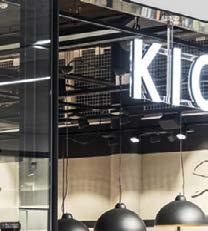


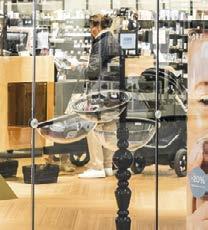























































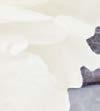




















By reputation, Tampere is a rugged beauty between two lakes. Here the heritage of an old industrial city intertwines with the new, energetic trends of a modern university city, and the nobility of a cultural city with the charms of a city with a young population.
For tourists Tampere offers plenty to see and experience: our latest addition is a new, state-of-the art Tampere Deck and Arena for sports, music and events right in the city centre, easily accessible by train from all over Finland.

So where would I take a visitor in Tampere? We would start by walking along the banks of the Tammerkoski rapids, admiring the flowing water and the red-brick buildings on its edge. The city was founded in 1779 on the banks of the Tammerkoski rapids as a city that granted free trade rights to craftsmen, merchants, and entrepreneurs. In the 19th century, the small village grew into the largest industrial city in the Nordic countries, a city of cotton and linen weavers, shoemakers, and machine builders.
Only one of the factories remain in its original use, namely the TAKO paper mill on the banks below the rapids. Other factory buildings boast activities typical of the 21st century Tampere: culture, cafés, movie theatres, museums, galleries, and companies in the media and creative sectors.
From the “old city” of Tammerkoski, I would take my visitor to the bustle of Hämeenkatu Street and its surroundings to enjoy a selection of department stores and boutiques. We would also visit the university campus and Tampere Hall, home to Tampere Philharmonic Orchestra the world’s first Moomin museum.
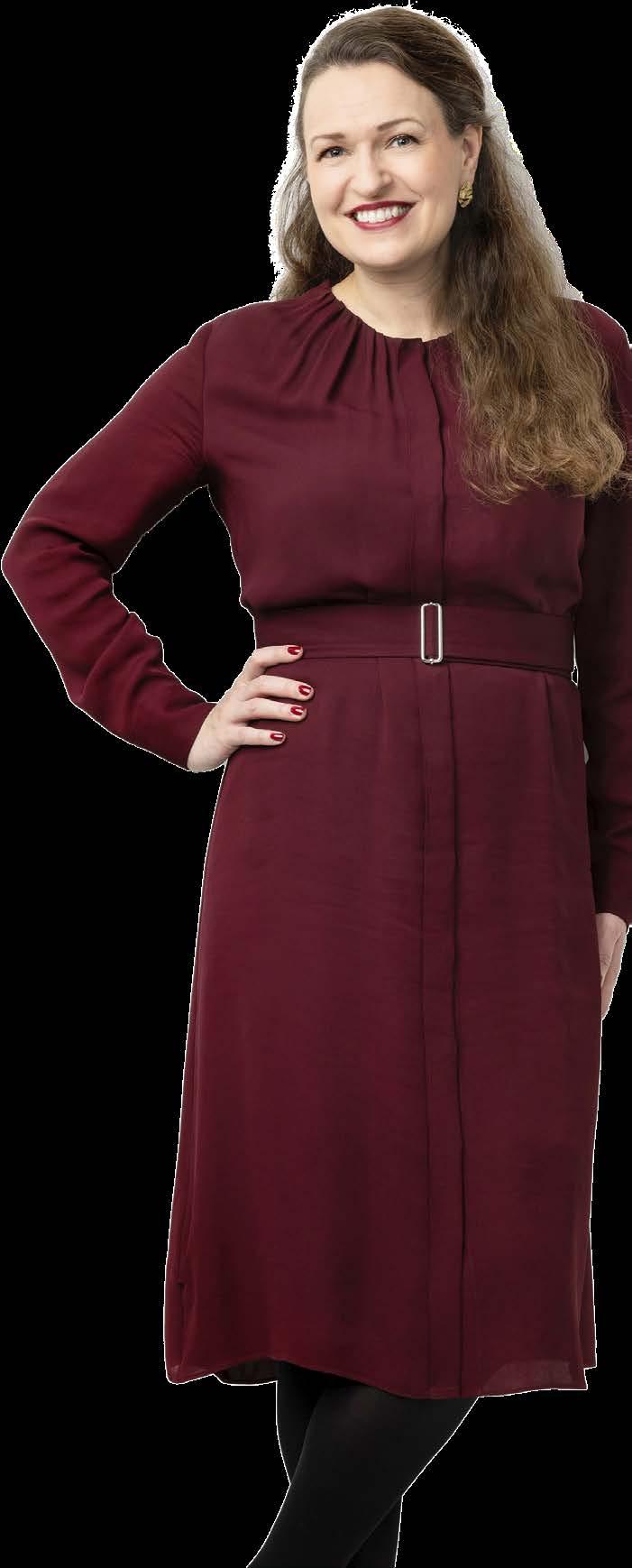
Today, Tampere is a busy city of trade, culture, and education that has a population of over 240,000. According to a recent study Tampere is the most attractive city to move to, so we expect to figure to grow! While the universities and other educational institutions bring students and young people to our city, also the diverse business sector attracts employees to the region. While we have a large number of companies operating in the ICT, health and wellbeing, and creative sectors, some manufacturing industry operators remain, for example mechanical engineering companies.
A good tour includes a peaceful break, so next I would probably take my visitors to the Tampere Cathedral to enjoy the atmosphere and admire the frescoes of Hugo Simberg. The tour would continue to the Saturday market in Tammela for coffee or black sausages, a local delicacy.
From the market we would hop on our brand new tram, and travel towards the slopes of Pyynikki and Pispala to enjoy a walk and see what the world’s highest gravel esker looks like, and to admire the beauty of Lakes Näsijärvi and Pyhäjärvi. The alleys of Pispala also show a different side of Tampere, with its old cottages and the unique and lively community of the locals. Walking back we might stop by Tampere Art Museum to enjoy a little afternoon art.
In the evening I would take my visitor to the theatre or in the summer to the Särkänniemi Amusement Park. Unless my visitor is a sports fan, in which case we would go to a football match or to an ice hockey match in the new Tampere Deck and Arena. This spring Tampere is a host for 2022 IIHF Ice Hockey World Championship. After all, Tampere is home of hockey!
In any case, our tour would end with an excellent meal in one of the city centre’s many fine restaurants. And after that, we could continue to a club to enjoy good music and the beautiful sunset over the rapids and the lakes of Tampere.
Anna-Kaisa Ikonen mAyor of tAmpere


Hopealinjat is your travel guide to Finland`s beautiful lake sceneries and the best local flavours.

Our cruises and services provide many ways to enjoy fresh air and to see the world-famous Finnish lake sceneries, city views, beautiful countryside and green forests. Hop onboard on our memorable cruises.

We offer cruises in Tampere, Hämeenlinna, Virrat, Ruovesi, Nokia, Lempäälä and many other destinations along the way.





For more infor mation
www.hopealinjat.fi

Contact: 010 422 5600
asiakaspalvelu@hopealinjat.fi

The Viikinsaari island in Tampere is a wonderful place to spend a summer day with your family, friends or a loved one. The boat trip from Laukontori harbour to Viikinsaari island takes only 20 minutes and offers a lovely break from the hassle of the city. Viikinsaari offers something for everyone: summer theatre, nature park, sauna and outdoor games for hire.
Island’s over 120 years old restaurant Viikinsaari, the oldest summer restaurant in Tampere, is located in a beautiful old wooden villa. Restaurant Viikinsaari offers lake and archipelago inspired, straightforward Finnish food with a modern twist valuing local producers and the island's very own herb garden.
Take a look at the schedule and book your tickets online www.viikinsaari.fi www.ravintolaviikinsaari.fi

S/s Tarjanne built in 1908 is the only passenger steamship in the world that still operates regularly on a long distance route. Tarjanne sails from Tampere Mustalahti harbour to Virrat via Ruovesi.
Onboard Tarjanne passengers will experience the authentic steam whistle blow and enjoy delicious modern Finnish food made with fresh, local ingredients at the restaurant designed by a famous Finnish painter Akseli Gallen-Kallela.
For more information and tickets www.tarjannelaiva.fi
Pesäpallo, or Finnish baseball, is the Finnish national sport, with a history full of colorful characters, grand emotions, and scandals. In the future, there may even be tea breaks.
Written by Matti Mäkelä translated by OWen F. WitesManBased on rock paintings, ancient mammoth hunters were already playing a game like baseball in Finland at the end of the ice age. That would be a nice way to start the story of pesäpallo, but in reality, the history of the sport is much shorter and much less connected to any mythical roots in Finnishness.
The father of the sport was Lauri Pihkala, the Grand Old Man of Finnish sports, who developed the rules of pesäpallo in the 1910s, modeled on American baseball and a game called kuningaspallo (“kingball”) played earlier in Finland. And kuningaspallo wasn’t born in a vacuum either—in the background there were many other ball games where the goal was to hit a ball, run, catch, and tag out opponents. The closest equivalents of kuningaspallo were the Swedish långboll, the German Schlagball and the Russian laptá.
Strictly speaking, pesäpallo is a case of cultural appropriation of pan-European and American traditions. The name of the sport is even a direct translation from

American pastime.
their
Everything you ever wanted to know aboutthe Despite
similarities, there are also many differences between baseball and pesäpallo, the biggest of which is that in pesäpallo, the ball is pitched upwards, not towards the batsman as in baseball and cricket. This difference is apparently due to the fact that Pihkala, who found baseball boring (Homer Simpson also made this observation while trying to watch his favorite sport during his beer strike) wanted more action in the game. Charlie Brown might also enjoy the pitching style in pesäpallo, since he would never have to worry about another line drive.
The first officiAl gAme of pesäpallo in its current form was played in Helsinki on November 14, 1920. Thanks to the lobbying work of Pihkala and other activists, the game spread rapidly and became known as the national sport of the young nation. In the 1920s and 1930s, the game was particularly popular in schools and civil guard units (a voluntary national defense organization active from 1918 to 1944).





Finland, which had just become independent, was a country divided by the wounds of the Civil War of 1918, and the reputation of pesäpallo as a sport from “white” (vs “red”) Finland prevented the wider adoption of the sport by the working-class sports movement until after the Second World War. Similarly, Swedish-speaking Finns initially shunned the sport as too connected to Fennoman ideology.
Pihkala’s own background and worldview also influenced the reputation of pesäpallo. Pihkala was ardently nationalistic and belonged to the White Army during the Civil War. Later it was alleged that he was involved in activities during the war that would now likely be considered war crimes. After the war, Pihkala served as the sports director of the civil guards and promoted the sport as a form of training especially suitable for soldiers. According to Pihkala, the sport was not suitable for women, for whom he recommended tennis, swimming and figure skating.
Since the Second World WAr, the position of pesäpallo has stabilized, and practically every Finn has played the sport at least during school physical education classes (however, due to the difficulty of the sport, that hasn’t always been a good thing, as can be seen from many recollections of childhood trauma related on the Internet).

Pesäpallo continues to divide the country but for geographical rather than ideological reasons. After ice hockey and football, pesäpallo is the third most watched team sport in Finland, but its popularity is concentrated in the countryside and small towns. But in the sport’s core areas, its popularity is incredibly huge. For example, the average number of spectators for the team in the town of Vimpeli is more than 2,000, with a spectator record of 5,216. These numbers won’t
seem high unless you know that the population of Vimpeli is only 2,756. A similar level of baseball enthusiasm in New York City would mean that Yankee Stadium would need to have 15 million seats.
However, in the 1990s, the situation seemed to be changing. The all-time crowd record for the top pesäpallo series was made in 1997, when the total number of spectators hit almost half a million. Helsinki had got its own major league team a year earlier, sponsors had taken notice, and pesäpallo seemed like it might become a serious challenger to hockey and football.
But two years later, everything was different. The Helsinki-based club Kaisaniemi Tigers had been successful athletically, but financially the club’s two-year story was a disaster that ended in bankruptcy at the end of the 1998 season. In the same year, the reputation of pesäpallo was also tarnished by a match-fixing scandal involving a large number of players as well as management and other staff from different teams. Police eventually investigated 460 people, of whom 30 were convicted. The scandal lingered in the headlines, damaging the reputation of the sport and reducing its popularity.
OVer the lAst decAde, the popularity of pesäpallo has risen again and small indications of urbanization have even been seen again: the Pesäpallo World Cup was held in 2017 in Turku, and the Tampere club Manse PP took the Finnish championship in 2021.
Internationally, pesäpallo is an extremely small sport, although it has spread to Sweden and Australia with the help of Finnish immigrants. The World Cup began in 1992, with Finland, as expected, taking all the gold medals awarded. Second in the medal stats is Australia, where the World Cup has been played twice. The 2019 tournament was held in India, and for the first time, the traditional cricket countries of India and Bangladesh took top rankings. Interestingly, pesäpallo has not spread to these countries with migrants but through social media.
So what is the future of pesäpallo? Of course, there are big challenges for the sport. Competition for the interest of participants and spectators is intensifying all the time with new sports and forms of leisure. On the other hand, pesäpallo has a strong and committed fan base, and in a positive future scenario, the sport could first become the number one sport in Finland’s major cities and then maybe even an international success story. That would probably require rethinking the rules and practices of the sport; for example, acceptance could be promoted in cricket countries by adding tea breaks as part of the culture of the game. s
A similar level of baseball enthusiasm in New York City would mean that Yankee Stadium would need to have 15 million seats.Above: A game of pesäpallo in Brisbane, Australia in 1969.


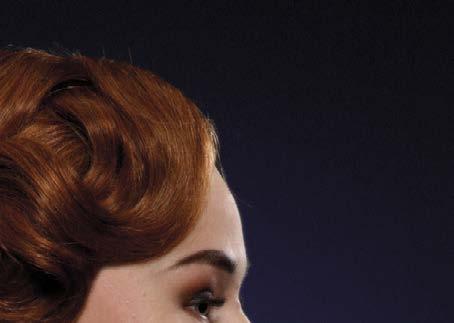














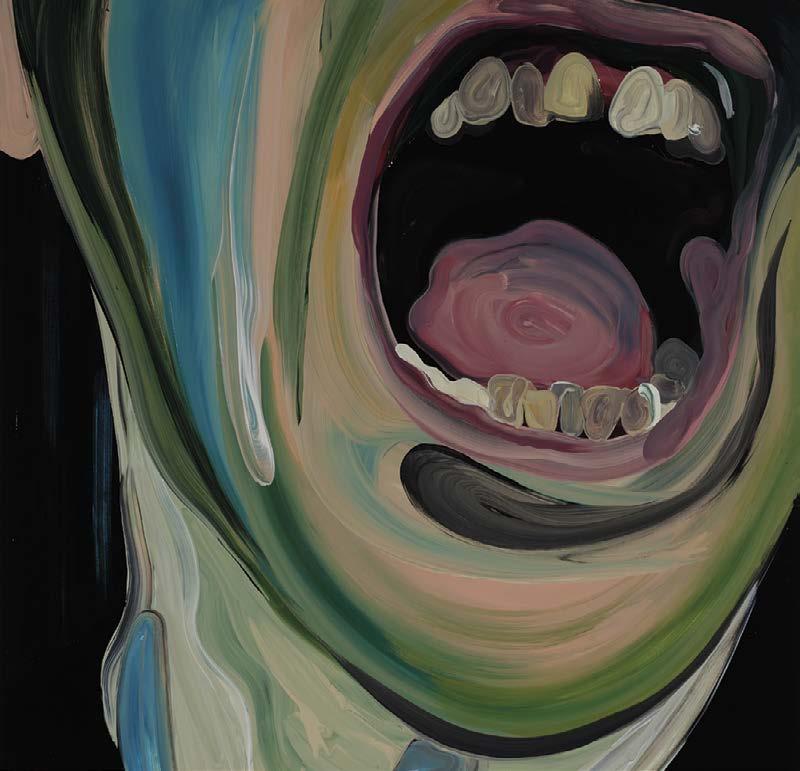


The pool is located near the city centre and easy to reach by tram, bus or car. Facilities include changing rooms and showers. There is a café where you can enjoy hot and cold beverages, ice cream and snacks. The area has sun loungers for relaxation and an extensive lawn area for children's play, games and sunbathing.




8000 BC
The connection to ocean from the Tampere region was cut when the ice age was finally over. As the ice melted, the land rose up and the lakes were born – also Näsijärvi and Pyhäjärvi, and little later the Tampere Rapids. A must see attraction from the ice age is Pyynikki, a 90 hectare ridge area, which is almost in the centre of the city. From here there are marvellous views to lake Pyhäjärvi. It is also a beautiful place for other outdoor activities.
600
Tampere was an ideal place to build a village, because there were good waterways to both north and south. The first signs of permanent living in the area are from the 7th century.
1200
By the 13th century Tampere region had grown, and it was an important market place. It was inhabited by the Pirkka tribe and even today the Tampere province is called Pirkanmaa, “The land of the Pirkka”.
1638
Tampere was not yet an actual city, but in 1638 Finland’s governor Per Brahe ordered two yearly fairs to be held at the the Tampere Rapids. That’s why Turku – the then capital of Finland – and Tampere have got a special connections of fates, for when the whole city of Turku burned in 1827, the damage was so severe partly because all the men from Turku happened to be at the Tampere fair.
1779
The King Gustav III of Sweden finally granted Tampere the full township status. And no wonder, because Tampere was huge: 3.2 square kilometres with population of no less than 200!
1824
The beautiful old church of Tampere was built. The architect was Charles Bassi
1820
A Scotsman called James Finlayson set up a cotton factory near the Tampere Rapids. It was the first but not last major factory in the remarkable industrial history of Tampere. Finlayson still is a brand every Finn knows. Also from that time on, the use of waterpower from Tampere Rapids became important.
1840
From the 1840’s Tampere became the most industrialised city in Finland. Soon there were factories that made iron, paper, machinery, clothes, shoes and many other things. Even to this day Tampere is sometimes called “Manse”, which comes from the saying that Tampere is the Manchester of Finland.
1901
Tampere is also a vibrant theatre city. The first one, Tampereen Työväen Teatteri – The Tampere Workers Theatre – was established 1901. In 2020 there are over 10 professional theatres in the area.
1918
In 1918 Finland was torn by a civil war with two sides: the “reds” and the “whites”. As a working class city, Tampere sided with the reds (who lost). Tampere saw severe battles, thousands died in war efforts and even more in prison camps.
Finland was in war against Russia, and Tampere was an important centre of war industry. For example Tampella made mortars and cannons. Tampere was also bombed, but luckily there was little damage.
1971
Näsinneula, the high tower that Tampere is famous for, was built. Few years later The Särkänniemi Amusement Park opened its doors.
1990
During the 90’s the heavy industry of Tampere was in trouble. One reason was the collapse of Soviet Union, but all and all the world was changing. The chimneys were no longer active, and the factories shut down. Nowadays they are renovated for apartments, museums and such. Industry in today’s Tampere in mostly high tech.
2022
Tampere is the third biggest city in Finland, with over 240,000 inhabitants in the city region. It has four universities and a very vivid cultural life. Tampere is also a city of vision and courage: the brand new tramway is a good example of that! s







READ MORE ABOUT RESPONSIBLE GAMING casinotampere.fi


Nysse, public transport in Tampere region, is a great way to get around the region. You can travel by bus, tram and commuter train.


Nysse trips can easily be paid, for example, using Nysse Mobiili app. On buses and trams you can also pay for your own trip with contactless payment.
Go on nysse.fi/en and find the best way to travel with Nysse.
- a fast way to move around the city
nysse.fi/citybikes


Tampere is full of interesting museums. But which one or which ones are right for you?
Written by rOOpe lipasti translated by OWen F. WitesMan1. The most important thing about a museum for me is…
A) To admire contemporary art and challenge myself.
B) To get to breathe in history.
C) The museum.
D) That the tour be as short as possible.
2. The best thing in a museum is…
A) Having experiences with others.
B) Being completely surprised (in a good way) by an exhibition I didn’t know about or expect anything from.
C) Getting more information about things you already know.
D) The cafe.
3. I would take a first date…
A) Somewhere we could have an intellectual discussion about the art experience.
B) To a place where we could walk side by side in dim, narrow corridors or romantic courtyards and alleys.
C) Depends on which exhibition he/she hasn’t had time to see yet.
D) Isn’t there a bar out in front of the museum somewhere?
4. Before going to a museum, I carefully read what exhibitions there are.
A) Why not, but it’s just as nice to be surprised.
B) Huh? No way! Museums are about exploring!
C) Of course. That’s the only way to get the most out of your visit.
D) Come on, isn’t it enough that I look at the blasted things?


A) An opportunity to have more experiences.
B) An old postcard in the Postcard Museum.
C) Significant savings every year—74 euros for as many museums as you want to see!
D) A driver’s license for a pensioner.
A) I don’t.
B) No harm, not everything needs to be understood. I smile and move on to the next thing.
C) I sit down and think of different approaches to understanding the piece.
D) Wait, you mean people understand this stuff sometimes?
A) Wednesday. A little shot of art is a perfect break from the week!
B) Friday. It’s nice to wind down for the weekend surrounded by the past!
C) Sunday. What could be more wonderful than spending a day off leisurely enjoying some culture and then discussing what we saw and experienced over coffee?

D) Definitely Monday.
A) A friend to contemplate everything I see and experience with.
B) My spouse or children. Adventure is always good to share.
C) My Museum Card.
D) A friend. In difficult situations, peer support always helps.
A) Tampere. There’s something for everyone here!
B) Tampere: it’s just like going abroad, the industrial history is so present.
C) On the banks of the Tammerkoski: 15 great destinations close together!
D) Don’t they all have museums?
Most A-answers An omnivorous connoisseur

You love art and new experiences. You are fascinated both by classical paintings and modern art. You are interested in reflecting on what you see and analyzing it by yourself or with a friend. All museums are for you, but you’re most likely to head to the Serlachius-museums in Mänttä or to the Tampere Art Museum. But maybe this time you’ll make an exception and go to the Police Museum!
You are fascinated by centuries past, historical people and their daily lives. An old sword or a child’s toy, a shoe from hundreds of years ago, or a drinking glass are things that bring history to life for you. Emil Aaltonen museum, The Finnish Labour Museum Werstas or even the Lenin Museum are your choices.
You probably already know Tampere’s museums like the back of your hand. Fortunately, there are so many of them that you can always find something new. Or maybe you might tour them in a new way, perhaps in alphabetical order! The Automobile ja Road Museum Mobilia, Hiekka Art Museum, Kimmo Pyykkö Art Museum, Moomin Museum, Spy Museum…
Museums aren’t at the top of everyone’s list, and that’s fine. However, if you head out on the down-low, you might get interested and hang around for a closer look. For example, a lunch in the historical milieu of Vapriikki is pretty great, and while you’re having coffee at the Sara Hildén Art Museum, you could afterwards take a good look on Tampere from the heights of Näsinneula tower.









YOU ARE HERE!

Hotels providing Tampere Times are marked on the map with numbered blue dots. The list of hotels can be found on page 24.

ADVERTISERS ARE MARKED ON THE MAP WITH GREEN DOTS.
PLEASE LEAVE THIS MAGAZINE FOR THE NEXT GUEST – THANK YOU!


01 courtyArd by mArriott tAmpere city hotel
Yliopistonkatu 57, 33100 Tampere Tel. +358 29 357 5700 www.marriott.com
02 dreAm hostel tAmpere
Åkerlundinkatu 2, 33100 Tampere
Tel. +358 45 236 0517 www.dreamhostel.fi
03 forenom ApArthotel tAmpere city
Hämeenkatu 28, 33200 Tampere
Tel. +358 20 198 3420 www.forenom.fi
04 forenom tAmpere city suites
Puutarhakatu 37 A, 33230 Tampere Tel. +358 20 198 3420 www.forenom.fi
05 hotel homelAnd
Kullervonkatu 19, 33500 Tampere Tel. +358 3 3126 0200 www.homeland.fi
06 hotel kAuppi
Kalevan puistotie 2, 33500 Tampere Tel. +358 3 253 5353 www.hotelli-kauppi.fi
07 lAplAnd hotel tAmpere Yliopistonkatu 44, 33100 Tampere Tel. + 358 3 383 0000 www.laplandhotels.com
08 originAl sokos hotel ilVes
Hatanpään valtatie 1, 33100 Tampere Tel. +358 20 123 4631 www.sokoshotels.fi
09 originAl sokos hotel VillA Sumeliuksenkatu 14, 33100 Tampere Tel. +358 20 123 4633 www.sokoshotels.fi
10 rAdisson blu grAnd hotel tAmmer Satakunnankatu 13, 33100 Tampere
Tel. +358 20 123 4632 www.radissonblu.com
11 scAndic eden nokiA
Paratiisikatu 2, 37120 Nokia
Tel. +358 3 4108 1627 www.scandichotels.fi
12 scAndic rosendAhl
Pyynikintie 13, 33230 Tampere
Tel +358 3 244 1111 www.scandichotels.fi
13 scAndic tAmpere city
Hämeenkatu 1, 33100 Tampere
Tel. + 358 3 244 6111
www.scandichotels.fi
14 scAndic tAmpere hämeenpuisto
Hämeenpuisto 47, 33200 Tampere
Tel. +358 3 4108 1628
www.scandichotels.fi
15 scAndic tAmpere koskipuisto
Koskikatu 5, 33100 Tampere
Tel. +358 3 4108 1626
www.scandichotels.fi
16 scAndic tAmpere stAtion
Ratapihankatu 37, 33100 Tampere
Tel +358 3 339 8000
www.scandichotels.fi
17 solo sokos hotel torni tAmpere
Ratapihankatu 43, 33100 Tampere
+358 20 123 4634
www.sokoshotels.fi
18 spA hotel holidAy club tAmpereen kylpylä
Lapinniemenranta 12, 33180 Tampere
Tel. +358 30 687 0000
www.holidayclub.fi















Anna Retulainen is one of the leading figures in Finnish contemporary painting and her art is acclaimed by both critics and the general public alike.
Check the upcoming exhibitions from our website www.tampere.fi/sarahilden!





An hour’s drive northeast of Tampere lies the small art town of Mänttä-Vilppula. Its industrial centre, Mänttä, has been breathing to the beat of paper machines since the 1860s - paper machines set up by Gustaf Adolf Serlachius. Today, the name Serlachius says more about art than industry.
The story of Mänttä and Serlachius is an exciting one. In 1868, Gustaf Adolf Serlachius, a Tampere pharmacist, sailed with a few carpenters to Mänttä and built a ground wood mill beside the rapids there. The establishment of the mill launched a chain of events that led to the creation of one of the largest private art collections in the Nordic countries – and one of the most impressive art museums in Finland. In just over 150 years, Mänttä has seen four generations of paper mill barons, their expanding art collection and a fine arts foundation, which has also taken bold initiatives in the Finnish museum field.

The fearless visions of G.A. Serlachius, the first of Mänttä’s paper mill barons, laid the foundation for a successful forest industry company. It was thanks to him that Finland got its first icebreaker in 1899. Gustaf Adolf was also a patron of the arts who financially supported, for example, Akseli Gallen-Kallela, the master of the Finnish Golden Age, during his travels to Paris and other artistic endeavours.
As Gustaf Adolf did not accept his own son as his successor, the mantle was inherited by his nephew Gösta Serlachius in 1901. He was a dedicated businessman who was also passionate about art and founded the Gösta Serlachius Fine Arts Foundation in 1933. Through him, Mänttä obtained a church filled with art, which is well worth a visit.
Gösta’s son, R. Erik Serlachius, took over the management of the forest business after his father’s death in 1942. During his time, Mänttä was included in the official travel program of the state guests and was showcased as a thriving factory community; the visitors from far afield marveled at the efficiency of the production facilities and the well-organised housing of the workers. In the early 1960s, Serlachius launched the iconic Serla toilet paper, which is still popular among Finns.
The era of the barons of the Mänttä paper mill ended during the time of R.Erik's son Gustaf Serlachius, when the company merged with Metsäliitto Industry Ltd in 1987. Gustaf expanded the museum activities and founded a museum of industrial history in Serlachius’ former headquarters building.

The paper mill baron era is in the past, but many traces of it remain visible in Mänttä: fascinating buildings and a mill that exports paper to the world. Since 1908, toilet tissue has been made along the rapids in the centre of Mänttä. Today, the tissue production of Metsä Tissue’s Mänttä mill, converted into toilet paper rolls, amounts to three million rolls a day.
Mänttä is full of contrasts. On the one hand, there are cherished historic milieus, on the other, deserted houses on rundown streets. The migration flow from Mänttä-Vilppula (population 9,500) is towards larger population centres. The town endures, however, and offers its residents, in addition to the necessities of life, excellent recreational options such as ice hockey, horseback-riding and music lessons, not to mention visual arts.
Only a few small towns are as accustomed to the art world’s latest phenomena as Mänttä. A performance seen at the town’s only traffic light intersection may raise a few eyebrows, but it is accepted curiously or calmly. Community projects by artists visiting the Serlachius Residency bring town residents of all ages into contact with the world of international art.
The development of Mänttä into an art town began with the establishment of the Gösta Serlachius Fine Arts Foundation. Gösta Serlachius’ manor house and its art collection were opened to the public in 1945. The visual arts scene was strengthened when Finland’s largest summer exhibition of contemporary art, the Mänttä Art Festival, began in 1991. Nationally significant art events are not limited to the visual arts: the Mänttä Music Festival, an annual piano music event, was held for the first time in 1999.

A visit to the heart of this small Finnish town is like a trip to another reality.
Mänttä’s main all-year-round attractions are the Serlachius Museums. In the town centre, at the company’s former head office building, now called Gustaf, visitors can learn about the delusions of grandeur of the first paper mill baron G.A. Serlachius in the permanent exhibition Paper Devil. This impressive, architecturally distinguished building also hosts changing exhibitions of art and cultural history.
VISITORS FROM AFAR MARVELED AT THE EFFICIENCY OF THE PRODUCTION FACILITIES AND THE WORKERS' WELL-ORGANISED HOUSING.
The second Serlachius Museum, Art Museum Gösta, is located 2.5 kilometres from downtown. Last year, it was the second most visited museum in Finland. Art exhibitions are spread over Gösta Serlachius’ former manor home and its newly completed timber-framed extension, which has been awarded for its modern wooden architecture. The museum showcases contemporary art by Finnish and international artists, famous masters of the Golden Age of Finnish Art and works by old European masters. The collection also includes pieces by modern and contemporary international masters, such as Claude Monet’s Haystack in the Evening Sun and Anselm Kiefer’s Väinämöinen Ilmarinen.
At the heart of the Serlachius Art Museum is a landscape restaurant, whose restaurateur, chef Henry Tikkanen, has been awarded the Finnish Chef of the Year title. Visitors will also have the opportunity to enjoy Henry’s culinary creations in the Art Sauna, which will open in summer 2022. It combines architecture, art and design in a beautiful lakeside setting next to the museum. The architects Héctor Mendoza, Mara Partida and Boris Bezan, who also designed the museum extension, have now created a fresh take on Finnish sauna culture. Visitors can also enjoy the lake view by taking a walk through the sculpture park to a neighbouring island.

When it comes to culinary experiences, the restaurant Viinitupa Vuorenmaja in the Mäntänvuori forest conservation area is well worth visiting. The lodge was part of Gösta Serlachius’ social programme for his workers: it was built as a base for ski treks. Besides juice, coffee and other hot drinks, it also serves continental snacks and a selection of wines.
A summer visit to Mänttä should definitely coincide with the annual Mänttä Art Festival. This year, 25 artists or artist groups will be featured in Pekilo, the Serlachius company’s former animal feed factory, which has been renovated into a large exhibition space. Also, not to be missed are the Realm of Fine Arts, an exhibition presenting works by newly graduated visual artists, the summer exhibition of the Serlachius Residence and Pirjetta Brander’s Sculpture Yard.
Visitors staying overnight can enjoy the atmosphere of the age of the paper barons at the hotel restaurant Mänttä Club, which was built after the Civil War in 1920 and operated as a club for the forest company’s bosses. Art Hotel Honkahovi, a beautiful functionalist building, was once the official residence of R. Erik Serlachius. For more unique local accommodation and other offerings, check on the Art Town website visittaidekaupunki.fi.
Mänttä is conveniently reached by the Serlachius bus, which carries culturally hungry visitors from Tampere bus and train station directly to the museums every day during the summer. In Mänttä, it is possible to rent a Jopo bicycle from the museums and cycle from one cultural destination to another through the beautiful lakeside nature. s
Opening Hours
Summertime 1 Jun–31 Aug DAILY 10 am–6 pm, also at Midsummer. Wintertime 1 Sep–31 May Tuesday–Sunday 11 am–6 pm.
Prices
Adults 10 €, Pensioners & Students 7 €, under 18s free admission. We accept Finnish Museum card.
Serlachius shuttle bus
The shuttle bus runs from Tampere bus station and railway station to Mänttä (straight to the museums) on the days that the museums are open: 1 Jun–31 Aug daily, 1 Sep–31 May from Tuesday to Sunday.
Timetables: serlachius.fi
www.serlachius.fi/en/
SEE ON MAP (PAGE 23).MUSEUM SHOWCASES CONTEMPORARY ART BY FINNISH AND INTERNATIONAL ARTISTS, FAMOUS MASTERS OF THE GOLDEN AGE OF FINNISH ART AND WORKS BY OLD EUROPEAN MASTERS.

The world’s first spy museum in the city center introduces you to the world of real life James Bonds where a single device can change the world more than governments.

of eavesdropping, hidden cameras and microphones, secret weapons, code breaking, e-mail hacking...




Mariankatu 40, Tampere
Emil Aaltonen museum of industry and art. The permanent collection represents Aaltonen´s life and displays some of his art collection. The exhibited artists are masters of older Finnish painting.

Temporary exhibition: Feelin’ Relaxed – Naivist Art from the Collections of the Oulu Museum of Art




















Tove Jansson's first Moomin book was published 77 years ago. The Moomin Museum in Tampere Hall is a good place to start exploring the Moomins - and to know a little bit about Tove herself.
 Written by rOOpe lipasti translated by OWen F. WitesMan
Written by rOOpe lipasti translated by OWen F. WitesMan
Tove Jansson (1914–2001) – or just Tove – was uncomplicated and friendly. She was a lover of everything beautiful and nice – dancing, parties, flowers, laughing. However, behind mundane, seemingly frivolous concerns can lie weighty and important values, and this is very much the case with the Moomin books. They focus on things like friendship, nature, and tolerance, which are also important values in Finnish society.
The first Moomin book, The Moomins and the Great Flood, was published 77 years ago. Tove wrote the book in 1939, but it wasn't published until after the war in 1945. Just like when it was written, today we are in a situation where many borders are closed, and freedom is not self-evident. First because of COVID-19, and now the war in Europe, the importance of love and friendship has increased. And that’s what the Moomins are all about.
The Moomin books give voice to different perspectives and personalities, but they all are united by an appreciation for equality and diversity. Everyone is always welcome at the Moominhouse, and its door – according to the song from the animated series – is never locked, even at night.
The characters in Moomin Valley can be exactly who they are, all different and unique. Sniff is greedy but fearful. Moominpappa is the head of the family but a bit irresponsible. Moominmamma takes care of everything to the point of exhaustion. Snufkin is a good friend but is always leaving... and so forth. The residents of Moomin Valley have many different sides, just like people. And they learn and grow.
It is also in this multidimensionality that the charm of the characters lies: they have annoying traits, but at the same time they are lovable. Children may see one aspect of the Moomins while adults see something else, and that’s probably one reason for their popularity – everyone can find something.
One unique thing about the Moomins is their positivity. There isn’t a single evil character in Moomin Valley. The Groke may be scary but is basically just lonely, like a lot of people who seem frightening in real life. Stinky, now... well, he tries to be a thief, but nothing much comes of it.
An important part of the Moomin Valley is the Moominhouse. It is modeled after the Glosholm lighthouse off the coast of Porvoo, which has since been demolished. Near Porvoo you can also find Tove and her companion Tuulikki Pietilä’s summer spot, a rugged
rock outcropping in the sea with no amenities – well, almost none: as the story goes, Tove would use her radiophone to order gin from the local village shop, which somehow worked even though in Finland you can't sell gin from a village shop.
The sea was an important element for Tove in real life and in her Moomin books. It is a symbol of freedom, where you can swim and sail, but at the same time it is something no one can control.
The sea is also prominent in the work of Tove’s role models. In illustration, she admired John Vauer and Elsa Beskow, but she also drew influences from elsewhere, for example from the famous sea painters William Turner and Hokusai in Japan.
Tove considered herself a painter above all else, but even though she was an excellent artist, she will always be most remembered for the Moomins. They are so beloved that since 2020 her birthday, August 9, has been declared a national flag day. s

Open:
Tue–Wed 9am–5pm
Tampere
Thu–Fri 9am–7pm Sat–Sun 10am–5pm Mon closed
The first Moomin illustration was drawn on the wall of the outhouse at the Janssons’ summer cottage in the early 1930s. Tove named it Snork. However, this character later developed into Moomin, changing along the way, and the Snork name was given to another character. Moomin was at his chubbiest in the 1954 drawings. That was around the time when Finland was finally recovering from the war, so maybe there was plenty to eat in Moomin Valley, too!
Tove Jansson
Tove Jansson (1914–2001) was a visual artist, author, caricaturist, and cartoonist, who is best known as the creator of the Moomin characters. A total of 13 beloved Moomin books were published, and they have been translated into more than 50 languages. Tove Jansson is Finland's most translated author.
MOOMIN MUSEUM Tampere Hall Yliopistonkatu 55THE RESIDENTS OF MOOMIN VALLEY HAVE MANY DIFFERENT SIDES, JUST LIKE PEOPLE. AND THEY LEARN AND GROW.



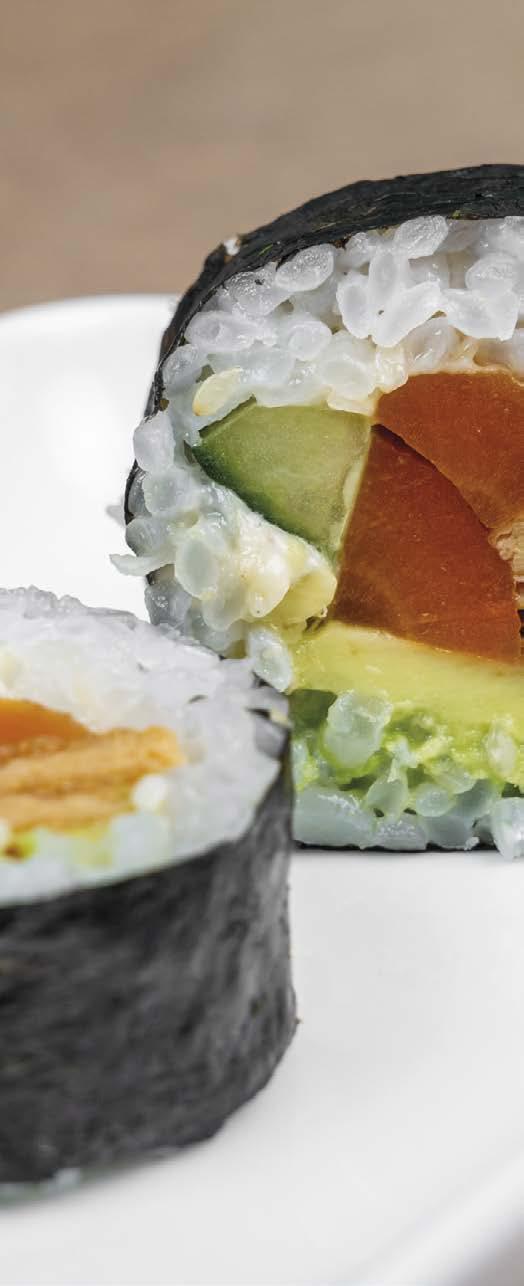
TAKE AWAY AND DELIVERY OPTIONS AVAILABLE!



There may not be lions or poisonous scorpions in Finland, but we do have wild summer beasts.

Finland’s largest predator is usually encountered in the forest, although sightings are extremely rare. There are about 2,500 bears in Finland, with most of them in Lapland or on the eastern border. The traditional way to protect yourself from them is mooning: if a woman was standing in the cattle pasture with her lower body bare, pointing her bottom into the woods, bears wouldn’t come around looking for trouble. Sadly, this beautiful old tradition is a rapidly vanishing folk art.
Karhu (Finnish for bear) is also the name of one of the most popular beers in Finland, so bears can also be enjoyed in urban settings.
There are about three hundred wolves in Finland. The last time one harmed a human was in 1882, but nevertheless, we have conversations every year about whether we should get rid of them entirely. In any case, they range all the way into southern Finland, especially the
southwestern region. Running into a wolf isn’t likely, but in the winter you can see their tracks, although usually those are just from the dog next door.
The Finnish national basketball team is called the Wolf Pack. This name comes from the fact that a wolf can survive on its own but is even stronger as part of a group.

The only wild feline predator in Finland is the lynx. They live all over the country, although there are only a couple of thousand of them. The lynx is a timid animal, so it is best seen on the roadside after having been killed by a speeding car. The Finnish lynx grows up to 140 centimeters long and weighs a maximum of 25 kilos.
Tampere has a hockey club of the same name, which comes from the coat of arms of the province of Häme, which features a lynx. When the Ilves hockey club was founded in 1931, lynxes had been hunted nearly to extinction. In 1962, the species was protected, and the population has since recovered.
An extremely endangered scavenger that lives in Lapland, with only about four hundred surviving. The name comes from the animal’s outrageous table habits: it “wolfs down” its food at a terrible speed, swallowing large pieces of meat whole.

The sea eagle is the largest bird in Finland, with a wingspan of up to 240 centimeters. In the archipelago, you can see them flying in the sky, but it isn’t a good idea to get much closer than that.

Especially dangerous for holidaymakers enjoying ice cream or other treats outside in the square. The arrogance of seagulls is only matched by their cunning, so tourists should stay vigilant to avoid being robbed by this terrible beast. There are an especially large number of these mafiosi of the bird world in the Helsinki Market Square.
However, the Finnish word for them, lokki, is also used to mean a person who scrounges off others.
Despite its small size, a frightening adversary in the Finnish summer. There are fewer of them in the cities, but as soon as you move into the woods or, especially, to a summer cottage, their armies attack. Mosquitoes suck blood and can smell out precisely which party guest they most want to drink dry. In all likelihood, it’s you.
Mosquitoes are also skilled in psychological warfare: when you go to sleep, one is usually hiding in your room and will begin whining the moment you fall asleep. Mosquitoes are surprisingly intelligent, which is why it doesn’t help much to get up and turn on the lights to hunt down your tormentor. It will just hide and then start again once conditions are more favorable again.
If for some reason you happen to kill the troublemaker, the commander of the mosquito army will have left a backup in the room, who will continue the torture. You might think that if you give up and let it drink its fill, the problem will be solved, but that is not the case, since the aforementioned backup will be there to take over.
RUNNING INTO A WOLF ISN’T LIKELY, BUT IN THE WINTER YOU CAN SEE THEIR TRACKS, ALTHOUGH USUALLY THOSE ARE JUST FROM THE DOG NEXT DOOR.
Basically harmless middle-aged men on vacation who someone forgot on a riverboat, a restaurant patio or in a park. Goofy guys are drunk for about four weeks straight, that is for their entire summer vacation.
Identifying characteristics: dressed in ancient cargo shorts, stretched and worn-out t-shirt that barely covers belly, sandals (and socks) and sunglasses. His face will be red from the sun and swollen from the alcohol.
Goofy guys usually just grumble to themselves and are mostly innocuous but very tiresome. Paying attention to them is not a good idea because they tend to be clingy.
Blue-green algae isn’t an animal, but it is alive: cyanobacteria have become a regular guest on almost all Finnish shorelines at some point each summer. It forms a pea soup-like algae porridge in the water, which looks less than inviting to swim in. And you shouldn’t, because it’s toxic. It can cause rashes, nausea, diarrhea and lung problems. As with many other distress calls nature is sending up, Finland is mainly addressing this through adaptation: go swimming when there is no algae instead of treating the root cause, which is eutrophication.
The deer fly may be the most fearsome enemy in the Finnish natural world. On the plus side, it usually only appears in the fall: deer flies live in the woods and fly into your hair, drop their wings and set up residence so tightly that no renter from hell would be harder to evict. Deer flies are also almost impossible to kill. Even if you hit it with a hammer, it might survive. (Best to get it off your head before trying, though).
When the temperature exceeds 24 degrees, Finns begin to melt. Work falls by the wayside, no one is able to sleep, no one does anything, and the air is filled with weeping and wailing and gnashing of teeth. The people who complain the most are the same ones who were dreaming all winter about summer and the sun coming back. When the temperature exceeds 28 degrees, a national emergency is declared, and instructions are given to the elderly that they should drink water if they’re hot. But when autumn arrives, we all remember how lovely summer was after all. s
THE ARROGANCE OF SEAGULLS IS ONLY MATCHED BY THEIR CUNNING, SO TOURISTS SHOULD STAY VIGILANT TO AVOID BEING ROBBED BY THIS TERRIBLE BEAST.










I love hotel room attendants. They are reliable, unobtrusive and irreplaceable. We can replace doctors, lawyers and hotel receptionists with artificial intelligence but not the person who cleans up the clutter that vacationers or business travelers leave in hotel rooms.
In A good hotel, a room attendant is always on site. You can identify them by their enormous carts full not only of a wide variety of cleaning supplies but also fresh towels, fresh sheets and endless small sundries to meet various guest needs: hygiene products, combs, sewing kits, shoe polish, pens, paper, irons, laundry bags, maybe even a Bible and birth control if someone happens to ask. You can get a warm blanket or a soft pillow. If they don’t have what a visitor needs, they get it.

Most hotel guests don’t greet room attendants. Maybe they don’t notice the person standing next to the big cart. Or they think they might not share a common language, which saves the paying customer the hassle of a universal smile and wave. It could also be that the guest really is as busy as they’re trying to look—or they’re ashamed of the mess they’ve left behind. Because really, how many times have you exited a hotel room in a terrible rush, leaving behind the aftermath of a boisterous night for someone else to clean up?
But the room attendant sees all. They go in every room after the guests leave. The most skilled professionals will also know when that moment is right. They won’t knock on the door when we’re still doing our morning routine or resting and can tell from how we’re walking and dressed whether we’re popping down for a quick breakfast or leaving on longer business.
While we’re taking the sights, sitting in meetings, or doing other business, an attendant is inspecting our rooms. They see all the dirty clothes left on the floor—yes, including the underwear—, notice the empty wine bottles and count the dirty glasses, see the leftover food and stains on the towels, remove the hair and Band-Aids from the bathroom floor drain, glance at what we’re reading, and look at what kind of clothes we packed. They clean everything, set the clothes in a pile, make the bed, fold our nightshirts on the pillow, and arrange our random stuff on the desk at right angles – as if trying to teach us how a clean home should look. And what a pleasure it is to return to such a room!
Because I’ve worked as a cleaner, too, I never leave my room messy when I go. I clean the toilet and even fold my nightgown, despite which the pro still smooths any wrinkles I might leave. And because I clean after myself before leaving, it’s easy for me to give the room attendant a cheerful greeting. Maybe also because I consider them to be one of the most important people when it comes to my own comfort. After all, they are also the guard who ensures that no one else slips into my room. s


But the room attendant sees all. They go in every room after the guests leave. The most skilled professionals will also know when that moment is right.



